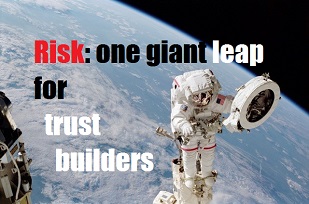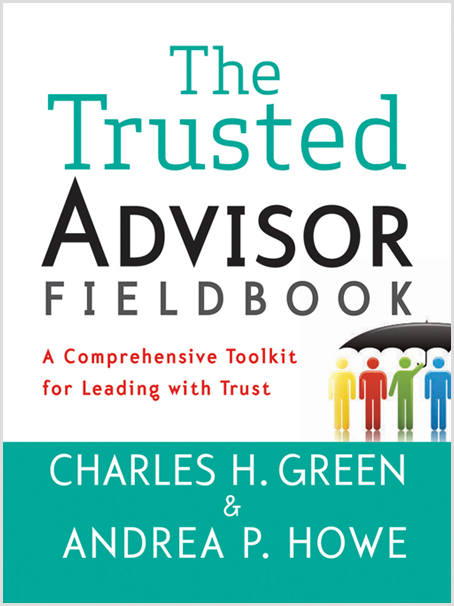This post is part of our Weekly Tips series.

Most of us in his position would get a little … well, concerned. Colonel Hadfield didn’t. Of course not. He had been trained for a different response, which is exactly that point of his talk: that we can change our primal fears.
This is a very relevant lesson for anyone trying to build more trust because of the close relationship between risk-taking and trust-building (see last week’s tip). Simply put, you don’t get deep levels of trust without taking personal risks. And most of us have to somehow get past our primal fears in order to be better risk-takers.
From Colonel Hadfield’s talk, I derived two steps that any of us can take to be less fearful and more courageous:
- Discern. Hadfield says the key is to look at the difference between perceived danger and actual danger. His example: Maybe you’re scared of spiders (some are lethal, after all). Do a little research, and you discover that the danger and the fear are two very different things. You learn (a) there’s only one venomous spider where you live, (b) it won’t kill you, (c) it only eats male spiders not humans, and (d) it builds webs in corners, not in your path.
In the realm of relationship-building, what’s the worst that could happen? That you’ll tell a client a difficult truth and she’ll fire you on the spot? Do a little “research” and there’s a good chance you’ll see that’s just fear, not real danger.
[Tweet “We CAN change our primal fears—a relevant lesson for anyone trying to build more #trust. https://thegetrealproject.com/?p=4676 #getreal”]
- Practice. Panic is the natural reaction for a blinded astronaut who’s free-floating in space. Not for Colonel Hadfield, because he and his crew had practiced things going wrong over and over again—so much that when he went blind, his natural panicky reaction didn’t even occur. Hadfield’s first thoughts: Hmmmm, OK, I can’t see, but I can hear, and I can talk, and a crew member can help me. (By the way, his blindness turned out to be a temporary condition.)
Hadfield says, “If you walk through 100 spider webs, you will have changed your fundamental behavior … your cave man reaction. And you can apply this to anything.”
Anything? Yes, anything. Including taking personal risks to build trust.
Make It Real
This week, consider a type of personal risk that you consistently don’t take at work, but know you should take for you to make the kind of difference you’re committed to. Jot down a few notes about the perceived danger. Now do the same for the actual danger. What do you learn?
Learn More

Find out how to vanquish fear in selling, from our friends at Trusted Advisor Associates, or learn how to discover your blind spots (pun intended) in Chapter 10 of The Trusted Advisor Fieldbook.
Andrea Howe
Latest posts by Andrea Howe (see all)
- A lesson from my own trust “fail” in my first-ever client meeting - April 15, 2024
- Why choosing silence in the face of awkwardness can be a trust tragedy - March 21, 2024
- What NOT to do when you think you’re being ghosted - February 21, 2024
